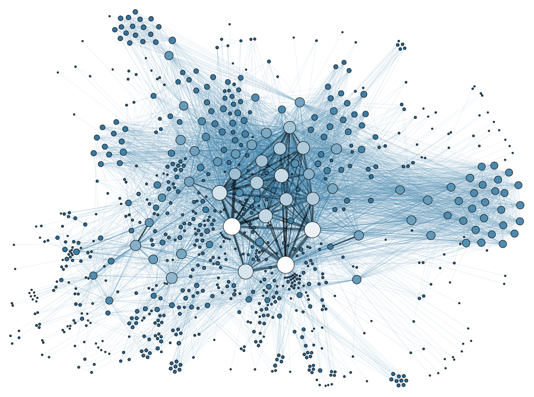Does Critical Balance Among Cellular Networks Regulate Life?

Life forms have many miraculous features. Maintaining the vitality of its physical structure and at the same time the tremendous capacity of adaptability to a variety of situations, are the two most prominent aspects that living objects acquire. Durability in maintaining physical structure and physiological processes provide all living beings with the stability needed for survival, while the tremendous adaptive capabilities have conferred all living beings to occupy every nook and cranny on Earth. But how living beings make this amazing thing happen is something that still remains elusive. A recent study done at the Arizona State University, USA, may shed some light on it.
The study takes into consideration various biological networks functioning in the human body which are essential for its survival. The researchers have found how these networks work through various interactions among them and what are the factors that hold them. They concluded that there exists a fine balance between adaptability and robustness in cellular networks. This balance, when perturbed beyond a critical level, can cause disruptions in the functioning of the system and is crucial for the survival of the organism.
The hypothesis that all living systems should exhibit the behaviour where a critical balance among different bodily processes exists is a well-motivated one. Also, an increasing number of cases have demonstrated empirically that this hypothesis holds true. The present study augments our understanding of the near-critical behaviour that life forms sustain.
Importance of Biological Networks
Biological networks consist of individual components like proteins or genes and describe the interactions of these components with one another to perform essential tasks like signal transmission between cells or regulating the basic functions of a cell. The interactions among networks or the cellular circuits maintain the various processes needed for survival of a living being.
The researchers considered 67 biological networks from the database called Cell Collective. The Cell Collective database is a huge repository of various biological networks. In the 67 networks they considered, the number of components ranged from 5 to 321 nodes, enumerating some 6500 different biological interactions. The nodes in the networks contain many key building blocks of life like genes and proteins that are involved in controlling cell division, growth and death, and cellular communications. They then studied the interactions among the networks by means of computer simulations.
In such kind of researches, scientists first find out the interactions among the networks based on the data from the repository. The data that a repository has is based on experimental results done on cellular system. Researchers then formulate mathematical relations that represent the networks’ functioning. How changing some parameters in their mathematical formulations perturb the network functioning and what are the values of the parameters that make the networks function properly is then studied. This gives a hint of how the entire system functions and how many changes it can sustain for its proper functioning.
Balance of Biological or Cellular networks
In the present study, the researchers found the threshold value at which the entire system may change, to be just a small change. Such a change can profoundly tilt the balance that a cellular network maintains. This loss of balance can lead to the collapse of the system and henceforth, the death of an organism.
Previous studies had showed that many biological systems from neurons to ant colonies maintain such criticality. This new study furthers the hypothesis of critical balance that gives rise to life forms.
According to Sara Walker, one of the co- authors of the paper that reported this study which was published in science daily, scientists still have to make a long way to understand what life is. Determining some quantitative properties like the criticality of maintaining balance is key to understand the distinction between life and non-life forms at a fundamental level.
Get the latest reports & analysis with people's perspective on Protests, movements & deep analytical videos, discussions of the current affairs in your Telegram app. Subscribe to NewsClick's Telegram channel & get Real-Time updates on stories, as they get published on our website.














